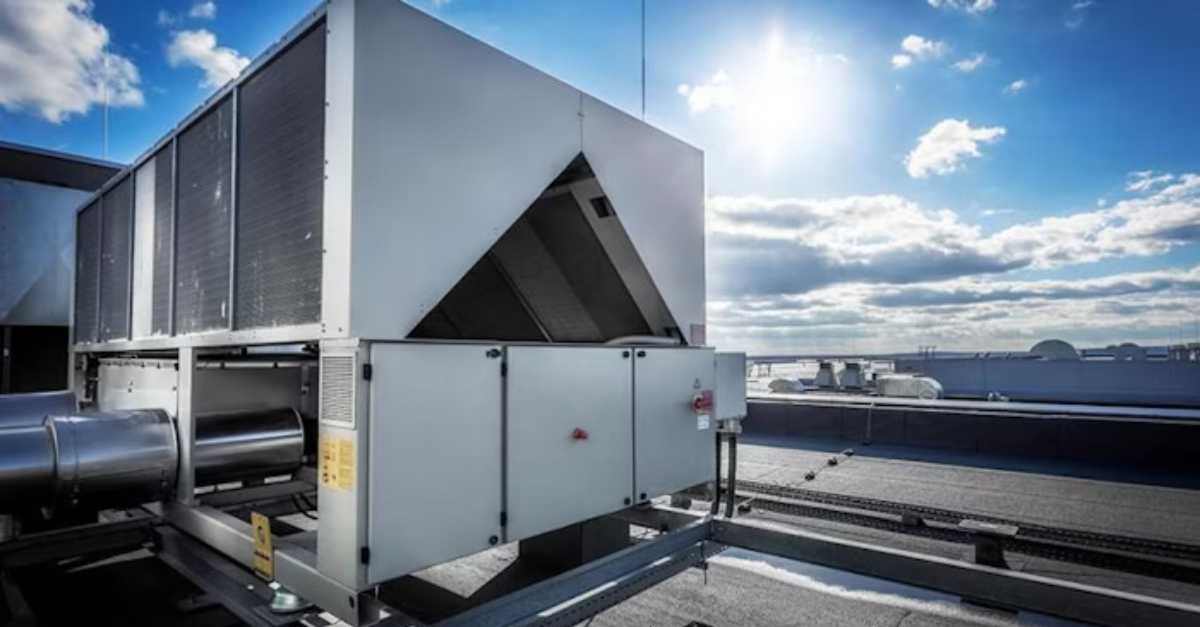
Understanding EPA Refrigerant Regulations
To limit greenhouse gases and ensure environmental safety and compliance, understand the EPA standards for refrigerant gases.
Solutions
Workplace Management Solutions
Real Estate Management Solutions
Maintenance Management Solutions
Energy Management Solutions
Engineering Document Management Solutions
Asset Management Solutions
Automate campus scheduling for classes, meetings, and exams with our EMS software.
Plan and manage conferences effortlessly with EMS software to impress guests and streamline operations.
Boost workplace flexibility and maximize space use with seamless desk and room booking.
Organize workplace or campus events smoothly, creating memorable experiences.
Optimize workspace, manage allocations efficiently, and reduce costs with our space management solutions.
Deliver projects on time and within budget by improving communication, collaboration, and efficiency with our software.
Streamline lease accounting for ASC 842, IFRS, and GASB compliance.
Manage leases efficiently by tracking key dates, analyzing costs, and ensuring compliance.
Centralize data and analytics for better insights, faster negotiations, and revenue growth.
Centralize facility and asset maintenance, automate work orders, and ensure compliance with our CMMS software.
Extend asset life, reduce downtime, and prevent costly repairs with data-driven monitoring.
Prevent equipment failures and extend asset life by detecting and addressing issues early.
Make sustainable, cost-efficient energy decisions by monitoring and optimizing power consumption.
Remotely monitor and control equipment with real-time data to predict issues, boost efficiency, and reduce downtime.
Easily share and collaborate on documents, creating a single source of truth for engineers and contractors.
Manage and analyze assets across their lifecycle to schedule maintenance, reduce downtime, and extend lifespan.
Improve visibility, automate work orders, and ensure compliance for efficient facility and asset management.
Resources
Browse our full library of resources all in one place, including webinars, whitepapers, podcast episodes, and more.
Support
Looking for access to technical support, best practices, helpful videos, or training tools? You’ve come to the right place.
About Accruent
Get the latest information on Accruent, our solutions, events, and the company at large.

In today’s rapidly evolving business landscape, sustainability is no longer just a buzzword—it is a fundamental component of successful operations. Companies are increasingly recognizing that environmentally responsible practices contribute to a healthier planet and drive operational efficiency and profitability. Central to this shift is the recent introduction of new refrigeration regulations by the Environmental Protection Agency (EPA), aimed at reducing the environmental impact of hydrofluorocarbons (HFCs). Understanding and adapting to these regulations is crucial for businesses that rely heavily on refrigeration systems.
The EPA’s new regulations, enacted under the American Innovation and Manufacturing (AIM) Act, represent a significant shift in how businesses must manage their refrigeration practices. The AIM Act mandates a phasedown of HFCs by 85% by 2036, introducing a schedule of gradual reductions in HFC production and usage. This schedule was further supported by the EPA’s recent release of 2024 HFC Allowance Allocations for 2025, part of the ongoing phasedown process.
Additionally, the Final Rule on HFC Management, published by the EPA in October 2024, provides measures for emissions reduction and mandates reclamation and proper disposal of HFCs. This phasedown schedule necessitates proactive planning and adaptation. Businesses must evaluate their current refrigeration systems, assess HFC usage, and develop strategies to transition to alternative refrigerants with lower Global Warming Potential (GWP). Failure to comply not only risks regulatory penalties but also places companies at a competitive disadvantage as the industry moves toward more sustainable practices.
Transitioning to sustainable refrigerants is not just an environmental imperative—it is a sound financial strategy. Although the initial investment in new systems or retrofitting existing ones may seem daunting, long-term cost savings are significant. For example, hydrofluoroolefins (HFOs) and R-454B are increasingly being adopted as low-GWP replacements, with R-454B providing a 78% lower GWP than traditional R-410A.
Environmentally, the benefits are clear. Reducing HFC emissions contributes to global efforts to combat climate change. Companies that lead in sustainability initiatives often enjoy enhanced brand reputation, increased customer loyalty, and a stronger market position, particularly in consumer-facing sectors such as retail CPG, restaurants, and grocery. For instance, Walmart’s sustainability initiatives, such as renewable energy commitments, have bolstered its brand reputation and fostered customer loyalty. Embracing these changes demonstrates a commitment to corporate responsibility and can open doors to new business opportunities.
Effective asset management is central to navigating these regulatory changes. The EPA has implemented new leak detection standards, including requirements for tracking and quickly addressing leaks. For instance, specific leak rates are set for systems containing 15 lbs. or more of HFCs to mitigate emissions effectively (EPA leak rate requirements).
Businesses must implement strategies to monitor and optimize refrigerant usage meticulously. This includes regular maintenance schedules, leak detection protocols, and accurate record-keeping to ensure compliance with EPA regulations. Investing in advanced asset management solutions provides real-time insights into refrigeration systems’ performance, allowing for immediate response to issues and reducing downtime. By leveraging technology, companies can streamline operations, maintain compliance effortlessly, and focus on core business activities without the constant risk of regulatory adherence.
Adapting to the new EPA regulations requires a strategic approach:
The impact of these regulations varies across industries. For some, minor adjustments may suffice, while others may require significant overhauls of their refrigeration infrastructure. Regardless of the scale, early action is key to mitigating risks and capitalizing on the benefits.
The industry is moving toward refrigerants with lower GWP, such as HFOs and natural refrigerants like ammonia and carbon dioxide. Innovations in refrigeration technology are making these alternatives more accessible and efficient. For example, Tesco—a major UK-based retailer—has transitioned to using natural refrigerants like CO2, improving energy efficiency and reducing emissions, which in turn enhances its brand image and fosters customer trust. Businesses that embrace these advancements position themselves at the forefront of industry trends, ready to meet future regulatory requirements and customer expectations.
The new EPA refrigeration regulations present both a challenge and an opportunity. Businesses that proactively adapt will not only ensure compliance but also drive innovation, reduce costs, and enhance their market position. Sustainability and operational excellence go hand in hand, and now is the time to take decisive action.
At Accruent, we are committed to empowering organizations to unlock the full potential of their facility assets. Our Observe remote asset monitoring solution is designed to help organizations navigate these regulatory changes seamlessly. By providing comprehensive tools for asset management, leak detection, and data asset analysis, Observe empowers businesses to maintain compliance while optimizing operational expenses.
Accruent’s Observe remote asset monitoring solution helps organizations maintain compliance with EPA refrigerant regulations across HVAC and refrigeration systems, while driving operational excellence in the maintenance of those connected assets. Our customers typically see up to a 30% reduction in refrigerant loss and associated costs, while ensuring regulatory compliance through automated monitoring and documentation."
— Rik Muschamp, Accruent Product Line General Manager, IoT Solutions
Now is the time to assess your organization’s refrigeration practices and embrace the transition to sustainable solutions. By leveraging tools like Accruent’s Observe platform, you can navigate the new EPA regulations confidently and efficiently. We invite you to work together to build a more sustainable future while driving your business forward.
To limit greenhouse gases and ensure environmental safety and compliance, understand the EPA standards for refrigerant gases.
With fines totaling upwards of $37,500 per day, it’s important to note how new regulatory changes will affect your enterprise refrigerant management ...
Avoid fines from refrigeration leaks, monitor usage, and stay compliant. vx Sustain has all your refrigeration management needs covered.
Subscribe to stay up to date with our latest news, resources and best practices